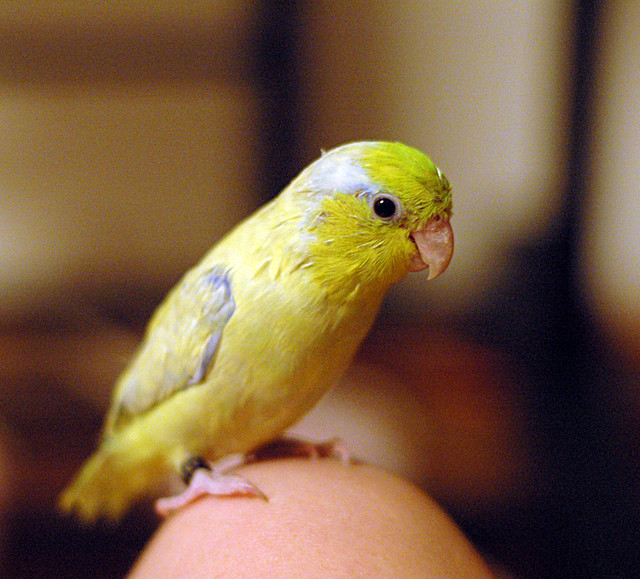 |
| Photo by BLW Photography |
There are several species of parrotlet, but probably the most common for pets are the Pacific parrotlets. The males are predominately green with blue markings on their wings, rumps and heads. Females lack the blue markings. Although green is their natural color there are a number of color mutations available. They include yellow, blue and white. Parrotlets, with good care, can live 20-30 years in captivity.
If their wings are left unclipped they are very nimble flyers. They can hover and dart and perform some impressive aerial acrobatics that you don't see with larger parrots. Unless you have a large, safe, secure environment for them to fly in, however, it is usually safer for them and easier for you if you keep them clipped.
To be happy and healthy you will have to provide them with a cockatiel sized cage with a few toys, fresh water and food. A mixture of small seeds, a few sunflower seeds and small pellets make a good diet. Supplement that with some fruits and vegetables. If you have one parrotlet, it will become bonded to you and should be quite friendly. If you have two or more they tend to be closer to each other, naturally, and usually are a little less tame. Make sure you get a parrotlet that was hand fed as a baby. Hand fed babies are much more socialized to people and make much better pets. Like any pet bird, they require regular attention, but they are good at amusing themselves for long periods of time while you are away.
Parrotlets are relatively quiet parrots. They chirp and chatter a lot but they don't scream like larger species. That, along with their small size makes them a good choice for apartments or other small living spaces. They are fun to own, fairly easy to maintain and can be great little companions.
are relatively quiet parrots. They chirp and chatter a lot but they don't scream like larger species. That, along with their small size makes them a good choice for apartments or other small living spaces. They are fun to own, fairly easy to maintain and can be great little companions.
|

No comments:
Post a Comment